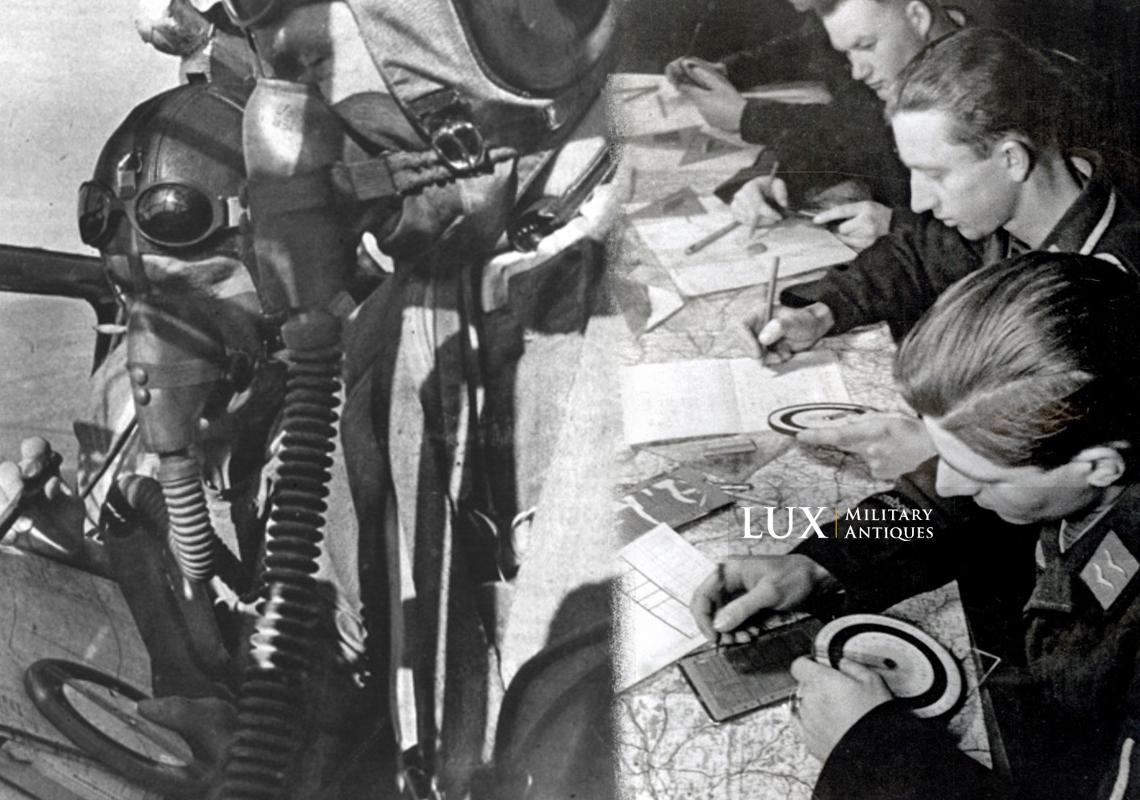

"With this knowledge, the British were able to build jammers whose effect was to "bend" the Knickebeinbeams so that German bombers spent months scattering their bomb loads over the British countryside. Reports were sent that the missiles were falling short I think with the results that many overshot the most densely populated areas. The V2's were diverted by feeding bad data to the Nazi's through a spy network that had been entirely compromised and the agents Doubled. Various strategies were used and despite having read RV Jone's book twice (at least) I can't recall enough to report here.
#German ww2 air navigation tools how to#
So my suspicion is that the bombers and escorts only flew missions when it was VFR at their base as well as at the target, and interceptors only had to fly when it was VFR at their base, otherwise there wouldn't be bombers coming in for them to intercept.Ĭlick to expand.The beams were not bent as such, it's just a radio transmission and no one knew how to make a portable black hole back then. So you didn't need any kind of instrument navigation at the target, but you needed a good navigator who could use a compass, stopwatch, chart, and/or sextant to find the IP and to find your way home after the mission.Īs far as instrument approaches, any kind of radio beacon on the ground would just lead the enemy to your base, and if you turned it on only when it was in use that would just make things worse by telling the enemy when it's a good time to bomb your base. The bomb runs were a matter of navigating to a visually identifiable initial point, then flying the final course to the target, and dropping your bombs on target. The bombers were mostly VFR missions, at least when it came to dropping bombs on visually-identified targets (which could have been as small as a factory or as big as an entire city). The fighters were either interceptors sent up to shoot down bombers or escorts sent to shoot down interceptors that are trying to shoot down bombers, and both of those missions are VFR in nature both because the bomber missions were VFR and because it's really hard to dogfight in a cloud. My own thoughts about instrument flying during WW2, not confirmed by anything more authentic than daydreaming, is that there wasn't much IFR flying to be done. The article about them on Wikipedia is instructive and includes both a chart excerpt and an approach plate that help get your head around how they were actually used. And apparently the four-course range stations were often converted to NDBs along the way. The real transition to VOR seems to have been after WW2 although the technology was available during the war. The visual air mail route beacons, the four-course range, the VOR, and the GPS. If you look into the history of ground-based aids to navigation, there were more or less 4 periods from what I can tell. It's interesting stuff for anyone asking the kinds of questions the OP asked. He talks about some pretty squeaky instrument approaches in airliners, mostly using the four-course radio range and occasionally a fan marker, as well as climbing up into the bubble with a sextant. Not a war story, but North Star over my Shoulder by Bob Buck is a great book that touches on a lot of the navigation techniques used in the early days. i saw him once or twice being interviewed on the history channel when that channel was actually living up to their name. he said the plane was crashed by a relief crew after they were sent home.

he said the last one didn't count as it occurred after the german surrender. he said he flew 30-something missions over occupied europe in the same plane with the same crew. i thought he might be a 51 pilot but he was recalling the escorts they provided. he was sitting on a bench admiring a P-51 which was in the same exhibit as the 17.

he didn't mention homing in on radio stations. the brits took over at night and he told me their navigators would actually shoot a sextant to confirm or find their location when needed. the 8th air force did daylight bombing over europe and if the primary target was "socked in" missions were either changed to an alternate or scrubbed altogether. I talked to a WWII B-17 navigator at the Wright-Pat museum many years ago and asked basically the same thing. i can't imagine that once hostilities commenced that all AM radio was silenced. I've always heard that the japanese homed in on the AM radio station broadcasts from honolulu en route to pearl harbor.


 0 kommentar(er)
0 kommentar(er)
